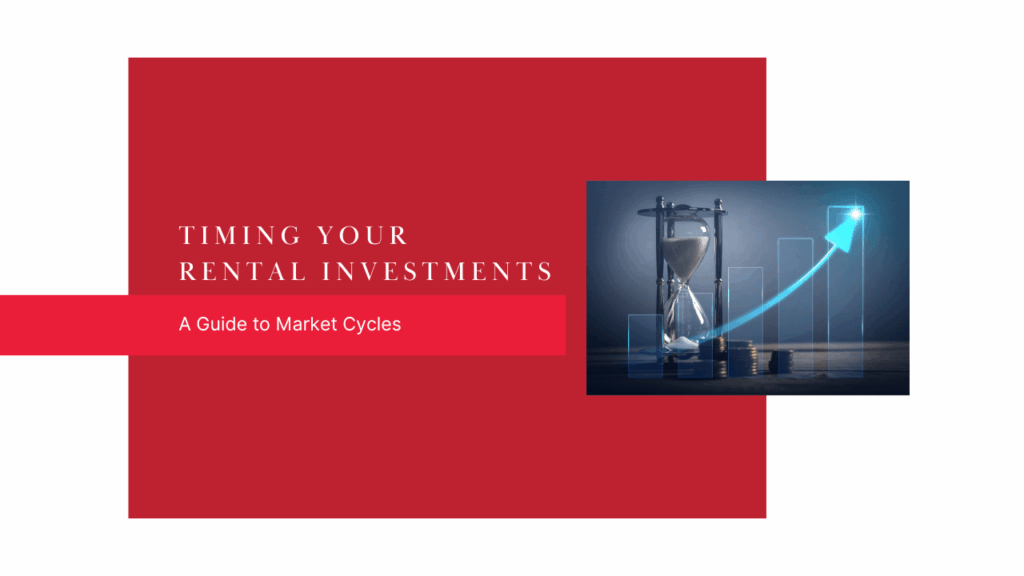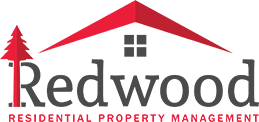
We know that there’s a lot to consider when you’re looking to invest in rental properties. The investment goals you put together will shape how you decide where to invest and what to buy.
Timing is important as well.
The strength of the market, the competition that currently exists, and the future trends and projections of how things will shift all have a major impact on the success of your investment, whether you’re buying a single-family home or a multi-family building.
What we’re really talking about are market cycles.
Market cycles can have a significant impact on the profitability of your rental properties, and understanding these cycles will help you make informed decisions. As professional property managers who have seen the local real estate and rental market move through plenty of cycles, we’ll explore the different cycles that we generally see and talk about how to assess the right time to invest. We’ll also provide some insights around how to adjust your strategy based on market conditions.
We believe it’s possible to succeed with real estate investments in any kind of market. However, understanding where to find the opportunities in each market type will have an impact on what you’ll be able to achieve.
Understanding the Real Estate Market Cycle
The real estate market generally cycles through four main stages: expansion, peak, contraction, and recovery. Sometimes you’ll hear different names for each of these cycles. Peak cycles, for example, are sometimes described as bubble markets.
While there are nuances in each cycle, there are also consistencies. It’s those consistencies that help us prepare for each cycle.
- Expansion Market Cycles
The expansion phase is characterized by a period of growth and recovery in the economy. During this stage, property values generally rise, rental demand increases, and rents may begin to climb. Investors can expect to see rising property prices, lower vacancy rates, and stronger demand for both residential and commercial properties.
How will you know the market is expanding?
- Rising property values. Home prices are increasing steadily, and demand for real estate is high.
- Low vacancy rates. Rental properties are full, and demand is high, with tenants eager to lease space.
- Strong economic indicators. Employment rates are up, and consumer confidence is high, contributing to more people willing to spend on housing. There’s not much concern over interest rates and mortgage costs.
- Rental values. As demand rises, rents start to increase as well, providing higher cash flow for rental property owners.
There are plenty of opportunities during the expansion cycle. For example, appreciation potential is high. Investors often see their property values increase. The idea is to buy rental homes at a lower price and potentially sell them for an impressive profit later. The higher demand for rentals also leads to excellent cash flow for investors, especially those who are investing for the long term. The expansion phase often signals trending growth. If you are willing to hold onto a property for a few years, you can benefit from the long-term appreciation of the asset.
- Peak Market Cycles
The peak phase occurs when the market has reached its highest point. This is the stage where property values are at their highest, rental demand is still strong, and the economy may be at or near its peak. However, it’s also a time of caution. Prices may be inflated, and there may be signs of an impending downturn.
What does a peak market look like?
- Property values are at all-time highs. Prices are rising rapidly, and many properties are sold for more than their asking price or their value.
- Overbuilding or overvaluation. Developers may start building more properties than the market can support, or investors may begin to overbid on properties, pushing prices beyond what the market can sustain.
- Rising interest rates. As the economy heats up, central banks may raise interest rates to prevent inflation. This can reduce buyer affordability and slow down demand.
- Increased speculation. More investors are entering the market with hopes of short-term gains, driving up prices even further.
This is often a challenging market for even the most experienced real estate investors. There’s a real risk of overpaying for properties. This could lead to lower returns when the market eventually corrects. Investors might experience lower cash flow. Rental demand is still high, but those rising property prices and interest rates will make positive cash flow more of a challenge, especially in California’s expensive markets.
During the peak stage, we are almost always waiting for a downturn.
An investor’s best strategy during this market cycle is to keep your long-term tenants in place. This is a good time to add value to your properties, and we recommend that you choose any new investments wisely.
- Contraction Market: Otherwise Known as Recession
The contraction phase is marked by a slowdown in the economy. During this time, property values begin to fall, rental demand may decrease, and vacancy rates may rise. This can be a challenging time for investors, but it also presents opportunities for those with the right strategy.
Signs of a contracting market are as follows:
- Decreasing property values. We are likely to see prices begin to fall as demand for real estate weakens. Sellers may be forced to reduce their asking prices in order to close deals.
- Rising vacancy rates. With fewer people able to afford new homes or apartments, rental demand can start to fall, leading to higher vacancy rates for landlords.
- Unemployment and economic uncertainty. Higher unemployment rates and overall economic instability can lead to fewer people moving into rental properties or being able to pay higher rents.
- Declining investor confidence. As the market slows down, fewer investors may be willing to buy properties, leading to a decrease in property transactions.
Challenges in this type of market are fairly obvious. There’s lower rental income and higher vacancy rates. You could find yourself with negative equity if property values fall significantly. Investors who bought at higher prices may find themselves in a situation where their properties are worth less than what they owe. Being over-leveraged in this type of market cycle is dangerous. Negative equity takes some time to recover. Selling will also be more difficult, especially if you need to sell at a certain price point.
Outside of all those challenges, there are opportunities. For example, you’ll be able to buy at a discount. When property values fall, it may be an opportunity to purchase real estate at a lower price. If you have the cash on hand as a downturn or a recession sets in, buying in this market can lead to long-term gains once the market recovers.
Many investors will target distressed properties during this market cycle. Those sellers will be eager to offload their homes quickly. So, investors who are able to find these opportunities can buy properties at a significant discount.
Another bright spot is the demand for rental homes. During tough economic times, rental properties that offer affordable housing may be in higher demand.
- Recovery Markets
The recovery phase marks the bottom of the real estate market cycle. It is often a time of great uncertainty, but it also represents a period of potential opportunity. Prices are at their lowest, and the market is in the early stages of recovery. For investors with a long-term outlook, this phase offers significant opportunities for growth.
Here is what a recovery market looks like:
- Property values stabilize. After significant declines, property values begin to stabilize or show early signs of growth.
- Increasing rental demand. As the economy starts to recover, rental demand picks up again. People begin to move into properties, and vacancy rates decline.
- Falling interest rates. Central banks may lower interest rates in an attempt to stimulate the economy, making it cheaper for buyers and investors to borrow money.
- New investment opportunities. More properties are available at discounted prices, and investors can begin to find properties with strong potential for long-term appreciation.
Things may still feel uncomfortable during a recovery market, but there are plenty of good opportunities for real estate investments. You’ll still be able to purchase properties at a lower price than in other markets. The recovery phase offers the chance to buy properties at their lowest point. With careful analysis, investors can acquire undervalued properties that will appreciate as the market recovers.
It’s also a good time to leverage lower interest rates. It’s a good time to finance new investments or even to refinance your existing properties. It’s also when you want to hold. As the market recovers, your investment will grow in value.
Timing is a big part of success when it comes to real estate investing. It doesn’t matter how quickly your investment portfolio is growing; if you’re not making decisions based on market cycles and timing, you could find yourself missing a valuable opportunity. The market cycles we’ve discussed here play a significant role in determining the potential profitability of your investments. By adapting your strategy accordingly, you can maximize your returns and minimize your risks.
This is one of the reasons you hire a qualified property management team like ours. We are not only studying the properties on the market, but we’re also studying the market itself. And the data, insights, and expertise we provide can prevent a costly mistake.
 Let’s talk about your investment goals and how to best position your investments in any given market cycle. Contact us at Redwood Residential Property Management.
Let’s talk about your investment goals and how to best position your investments in any given market cycle. Contact us at Redwood Residential Property Management.




 Graduate of Empire Business School, Santa Rosa in 1998 with an AA degree in Office Administration. Lorena has over 30 years of experience in office administration. From the California State Legislature to North Bay Realtors Association and most recently with Sue Carrell & Associates.
Graduate of Empire Business School, Santa Rosa in 1998 with an AA degree in Office Administration. Lorena has over 30 years of experience in office administration. From the California State Legislature to North Bay Realtors Association and most recently with Sue Carrell & Associates.